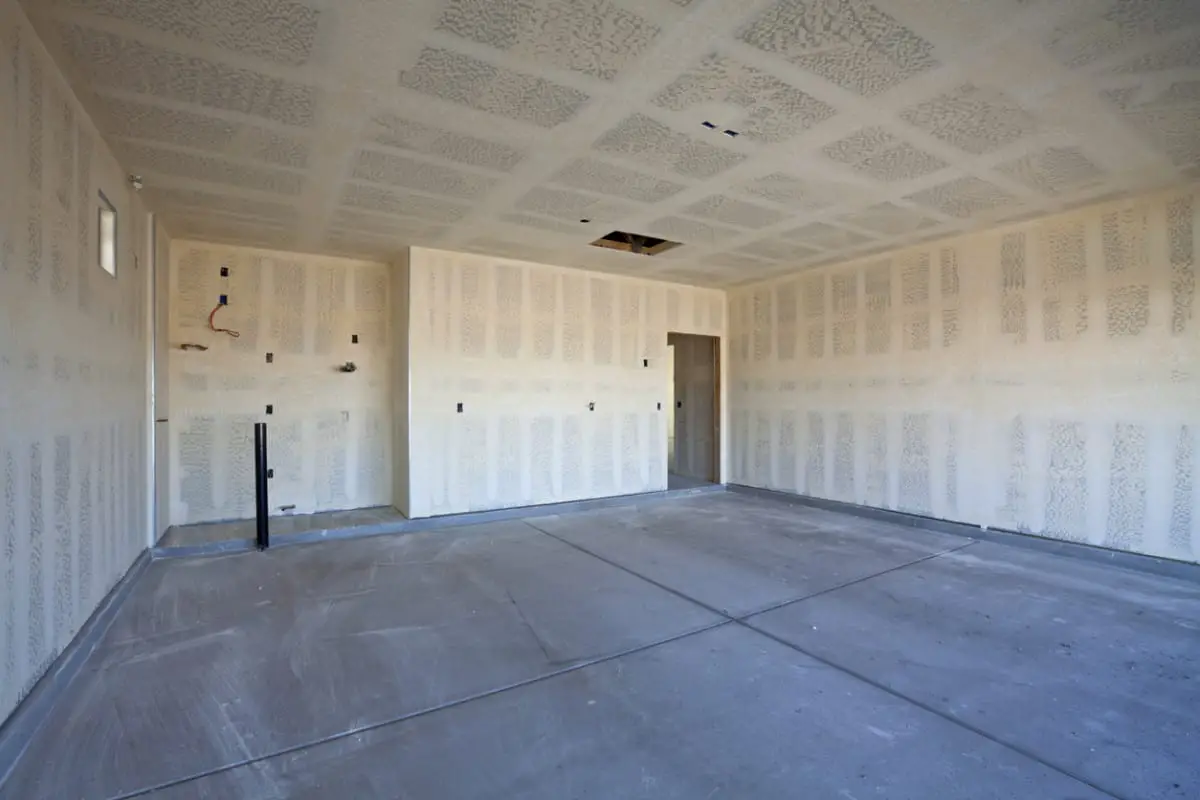Garages can be a great use of space, whether that involves storage, leisure time, or anything else you might have in mind for an extra room in your house. You might have wondered, however, whether or not you should finish the walls of your garage. Are there specific advantages or disadvantages that come with doing so?
Finishing your garage walls can be a worthwhile investment for your home. At the end of the day, it is going to depend upon your personal preference, but there are different pros and cons that it might be beneficial for you to learn about. Considerations include how you are planning to use your garage, what items will be in your garage, and more.
In this article, we will discuss the reasons why you should or should not finish your garage walls, as well as explain the different options you can choose if you do decide to finish your garage walls.
Is Finishing Your Garage Walls Right for You?
Finishing your garage walls might be of interest to you depending on how you plan to use your garage; different hobbies, jobs, and activities can be dealt with just fine with an unfinished garage.
On the other hand, a finished garage is a better environment for a variety of other activities. So, what is the difference between these two types of garages?
What to Consider
Earlier in the article, we discussed different uses of finished and unfinished garages. Now, we want to talk a little about the actual objects that will be in your garage and how those might affect your choice in finishing your garage walls.
Some of the options may seem like uncommon problems or situations, but we thought we would share our opinion.
Large Tools
If you have a number of items that you would like to keep stored in your garage, it might be a good idea to consider finishing the walls and adding Slatwall or pegboard.
Sure, it is easy to toss all your tools in a corner, but hanging them up in an organized manner is a much more efficient way.
Both with the neatness of your garage and the convenience of knowing where to find what you need. Rather than having a dirt-covered corner of shovels, rakes, saws, and a leaf-blower, consider investing in a finish of your garage walls.
Slatwall and pegboards can also be useful for everyday items, like children’s sports equipment and outdoor toys.
Workshop Area
If you plan to use your garage as a workspace, where grueling work will result in messy floors, small tools scattered about, and a lot of movement, it might be a good idea to think twice about finishing your garage.
Yes, it is ideal for keeping a clean workspace, but would it be worth it to finish your garage and damage the walls the next day with sparks from a buzzsaw or an accidental slip of the hand, resulting in a hammer finding its new home in a hole in your wall?
Of course, the choice is up to you. Maybe you are more organized and neat than a typical craftsman. Finishing your garage walls might not be that big of a risk for you.
Cabinetry and Other Enclosed Storage
Garages are known for being commonly used as storage spaces. In this case, however, we do not want to talk about the practicality of storage methods, but how they will work in the environment of your garage.
If you have a number of large, metal crates holding whatever it is you store in them, they might risk moving around a bit during future transport, daily rummaging through, or an imbalance from the items within them that, in severe circumstances, could fall over.
You do not want a big cabinet damaging the walls you finish. However, as we have already stressed, the organization is key. If you are confident that your cabinets and shelves will be alright, you might consider finishing your walls with a more durable, stronger material.
Cars
Obviously, another common use for garages is for parking your car. We talked about this previously, so we will just quickly reiterate.
If you park your car in your garage as a means to protect it from weather, temperature, etc., it is probably a good idea to think about finishing your garage walls. If you just park your car an unfinished garage, sure, it might be a bit safer than it would be outside.
But, without insulation and finished walls, the climate control will not really change between the outside and an unfinished garage.
Additional Living Space
Things like couches, televisions, and carpets in your garage suggest that you probably want to use your garage as another space for leisure in your home. Finished garages with insulation and walls are best suited for this type of environment.
A finished garage will provide all of the outlets, lights, and climate control you would want with a living area.
Exercise equipment also makes its way to the garage, so it’s out of the way. But with finished walls, this could be more of a home gym location. An unfinished garage will likely be fine for a workout area, but maybe you want a top-notch activity room.
With a finished garage, you could add more equipment, speakers, lighting, and just about anything else to give you the comfort of a gym at home, without taking over any square footage inside.
A finished garage will better help you achieve that vision. With an unfinished garage, a workout might be just as hot and uncomfortable as exercising outside.
Finished Garage Walls vs. Unfinished Garage Walls
If you’re still not sure whether or not to finished your garage walls is the solution you’re looking for, consider how it weighs in against unfinished garage walls. A closer look at the details might help you decide which best suits you.
Finished Garage Walls
A finished garage is a garage that has extra construction to accommodate certain other activities or purposes.
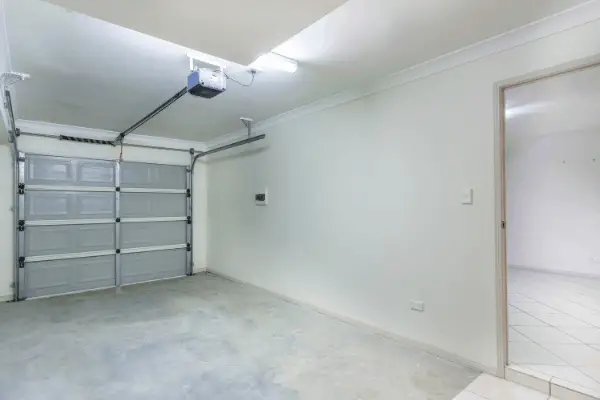
The main component of a finished garage is that the walls are going to be covered with drywall or something like drywall. In addition, you will typically have some form of insulation between the base wall and drywall to provide a more controlled temperature in your garage.
Finished garages will likely have more electrical work than unfinished garages, including more outlets and better lighting. These features are applicable to various functions that your garage may perform.
Finished garages provide many other opportunities regarding the use of your garage. With an unfinished garage usually lacking any type of insulation, you can park your car in it, but a finished garage provides the climate control that explains the reason many people park their cars in a garage.
That is the main purpose people finish their garages: a more controlled environment. Of course, you probably will not have your air conditioning unit connected to your garage (although it is not necessarily uncommon), but the insulation in the walls protects from extreme heat or cold air from outside.
It may not be as comfortable as your living room, but it is surely better than an unfinished garage whose only protection is its one layer of a wooden frame.
In any case, finished garages, while proving useful for parking your car, can also be used in a more leisurely way than an unfinished garage.
Suppose you want to add an extra media room in your house, where you can comfortably enjoy a nice movie night with your family or watch the big game on the weekend with your friends. Adding insulation to your garage and finishing the walls with drywall will make the room much more appealing.
Maybe you do not need another entertainment area. Finished garages can be used for any other idea you may have for a temperature-controlled environment: an art studio, storage for climate-sensitive objects, and much more.
However, the more work you put into fixing up your garage, the less likely you are to be able to freely do whatever you want in it without keeping your garage nice and neat.
For example, a finished garage might not be the best place to store all your tools or lawn care items. It would not be suitable for any activity that may call for your hands getting dirty.
Whether or not you finish the walls of your garage is entirely up to you. After weighing the specific advantages of finished versus unfinished garages, you should be able to make the executive decision on what to do.
As you can probably tell, some activities or purposes can work with either type of garage, so maybe the choice is not that big of a deal. If this is the case, it again falls on your preference.
If you do not mind an unfinished garage, save yourself the money, but if you would like a cleaner-looking, more comfortable environment, investing in finishing your garage walls can have its benefits.
Unfinished Garage Walls
An unfinished garage is a garage whose walls – and possibly ceiling – are constructed at their most basic form. The beams in the walls are exposed, and typically, there is no form of insulation.
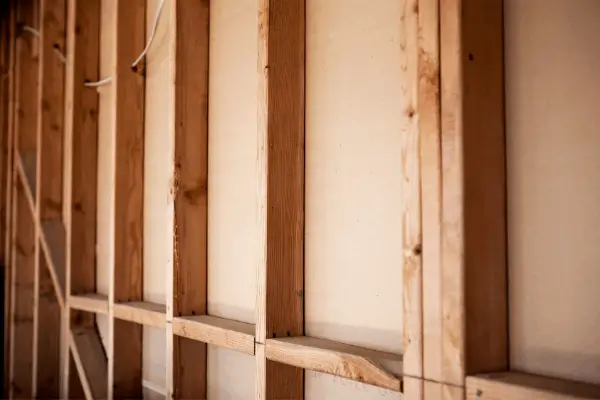
All you have is the wood frame that was built along with the rest of the house’s base frame. Minor electrical work such as a few outlets and light might be included in an unfinished garage, but there is nothing extremely fancy about an unfinished garage’s components.
Some people do not care to finish their garage walls because doing so does not benefit them in any way.
One advantage of keeping your garage walls unfinished is that if you use it mainly as a storage space that does not require any serious temperature requirement, the beams are out in the open.
Installing hooks or other material for hanging things up, putting up shelves for more storage space, or any other basic construction that would require the guidance of the beams is likely to be an easy process.
However, there are options with a finished garage that will provide much more available storage space than a few exposed beams.
With a finished garage, which we will discuss below, you are more likely to have trouble installing basic hardware. You might spend much more time than you would like with a stud-finder in your hand.
Other uses of an unfinished garage can range from using the area as a workout space, creating a makeshift tool shed, or working on some other long-term project that can withstand an uncontrolled environment.
Unfinished garages have their fair share of capabilities. If you know that what you are going to be using your garage for will not require any insulation, cosmetics, and more, you might consider saving your time and money and leaving your garage walls as they are.
Six Options Explored
If you do decide to finish your garage walls, this section is a great piece to read to learn how to get started. We will discuss different types of wall options and other necessary considerations to think about before finishing your garage.
1. Installing Drywall
As we discussed above, many people use drywall to finish their garages. Drywall is the simple wall covering you see in homes that can be coated with paint or wallpaper for aesthetic. It can work just as well in a garage, though it might not be the best choice.
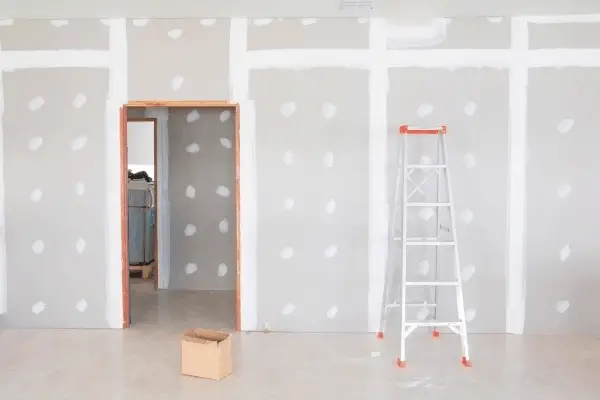
What might be a disadvantage of finishing your garage with drywall is the fact that it is not incredibly strong. Of course, in a home, it tends to hold up just fine, but in a garage, you might be planning on doing more things related to grunt work: storing heavy objects, working on projects that require tools, etc.
In this case, the drywall may not be the best choice for you, because even a small, accidental scrape or bump against it can damage the drywall.
On the other hand, drywall is a great insulator, so installing it over a layer of insulation can be a great combination for temperature control inside your garage. People will have their own opinions on how reliable drywall may be in a garage, but the fact of the matter is, it has its own pros and cons, just like the other materials we will discuss below.
Oftentimes, fire codes may require drywall in your garage, so you might not have the opportunity to use anything else. Drywall is relatively fire-resistant, so many fire codes enforce its use.
Make sure that before you do any time of finish, you research the requirements of your home or neighborhood.
2. Using Wood Sheathing
Some people prefer wood sheathing over drywall for affordability and convenience. It is less expensive than drywall, and as long as you keep an eye out for wires behind the wall, you can basically choose anywhere on the wall to screw for hanging, shelving, and anything else. With drywall, you would be restricted to only the beams as a location for these things.
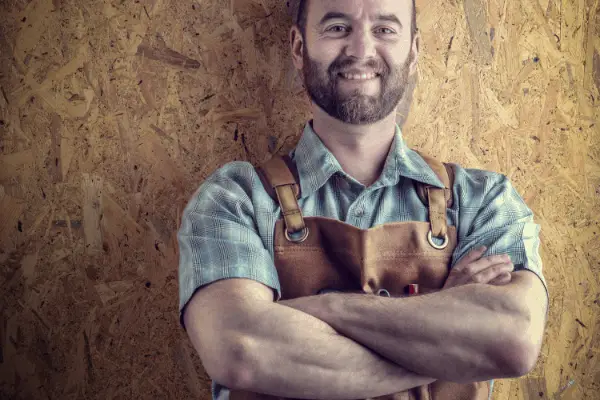
There are different types of material used in the wood sheathing. The most popular is probably the oriented strand board (OSB). The wood used for wood sheathing the walls of a garage with OSB is composed of compressed strands of wood held together securely with adhesives.
OSB is known to be stronger than other types of wood for walls, and although it will be used inside your garage, it can typically take the beating of quite a bit of different types of weather before becoming damaged.
Another popular wood used for wood sheathing is plywood. Plywood is known for its ability to be used for both interior and exterior purposes. Similar to OSB, it is made from pieces, or plies, of wood, glued together. There are numerous types of plywood, but we will not get into specifics.
The type of wood you choose for wood sheathing is going to perform similarly to any other wood you might choose, so the choice is up to you. The wood sheathing is popular because of its durability; it is not easily going to become dented or damaged like drywall might.
Also, some people like the simplistic look of unpainted OSB or plywood in their garage, but it can definitely be painted as well to achieve any aesthetic you might want.
3. Adding Slatwall Panels
Slatwall is a common options people choose when finishing their garage walls, and it is a neat-freak’s dream. It tends to be a more expensive option, so most people may not cover every wall with Slatwall, but will have one wall of their garage featuring it.
Slatwall consists of thin panels, usually made of PVC or a strong, durable plastic that basically allows any part of the wall to hold hooks, shelves, and whatever else you might want to install.
Slatwall is definitely the easiest way to store an immense amount of items, ranging from workshop tools, yard equipment, and ladders to bikes, sports gear, and shoes. Typical brackets on a Slatwall can hold up to fifteen pounds of weight, but metal brackets manufactured for more are available and can support up to sixty pounds.
If you organize the items stored on your Slatwall neatly, it can add quite an appealing look to your garage. Slatwall comes in many different colors, so you do not have to worry about painting it to make it look better.
The PVC that is likely to make up the material of your Slatwall is extremely resistant to heat, which will result in great protection between the outdoors and your garage. All in all, Slatwall is a great option for at least one wall of your garage.
4. Putting Up Cement Board
Cement board panels are lesser known than some finishing options, but they have a lot to offer. Besides the fact that they are going to prove worthy of any object hitting or rubbing up against them, cement board panels are definitely going to protect your garage from unwanted damage that the outside world might threaten.
Cement boards panels are not just a good option for their protection. If you are thinking of going all-in on your garage finish, cement panels might be the best option for you. Suppose you plan to turn your unfinished garage into a great hangout space: maybe a home theater or just a more simple area where people can socialize.
Well, with cement board panels, you can turn your garage into the most stylish room in the house. Materials like tile or exposed brick can be added to your cement panels, making your garage look better than ever.
5. Hanging Pegboard as a Finish
Pegboard is like the little brother of Slatwall. It is constructed by compressing pieces of wood, and installing it in your garage allows for a multitude of storage space. However, it is not typically aesthetically pleasing, so if you want a lot of storage but also want your garage to look nice, pegboard may not be your best option.
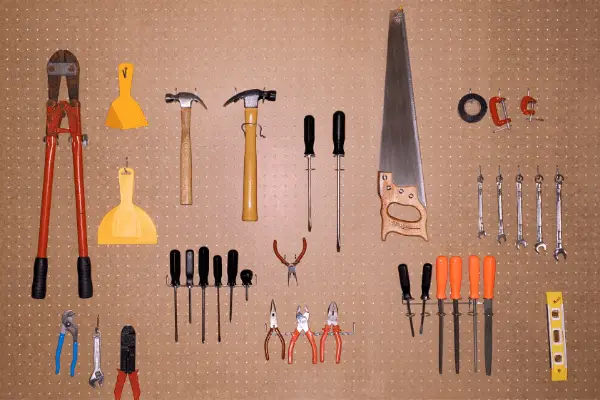
The neat thing about pegboard is its versatility. It can be installed over an unfinished garage by being attached to the beams, or it can go over the walls of an already finished garage, whether it be made of drywall, wood sheathing, or many other types.
Pegboard is full of holes that can securely support hooks for anything you might need organizing. Typically, pegboards are used for tools in a workshop space to provide a neater working environment.
6. Attaching Metal Panels
Metal panels can be easily attached to your garage frame and are another option if you are seeking a high-end, stylish look. These panels will often be made of strong steel that adds protection and aesthetics. Thin metal sheets have their fair share of pros.
One downside to metal panels is that they are one of the more expensive options. However, their easy installation and reliability might just prove a worthwhile investment. Because of their shiny surface, they can also provide more light in your garage without having to add more electrical work. The metal will reflect whatever light is already in there, whether it be from prior electrical work or the sun coming in through a window.
Types of Insulation for Finishing Garage Walls
If you do choose to finish your garage walls, then insulation needs to be considered, too. There are a number of options to consider when choosing what material to insulate your garage with.
Traditional Fiberglass
Fiberglass insulation is the insulation you are probably most familiar with. It is the most common insulation used in the walls of homes and is also popular with garages.
Fiberglass insulation comes in thin panels that fit securely between the beams of your garage wall. They are known for getting the job done and are easy for self-installation.
Easy to do Spray Foam
Spray foam insulators are known to be great for energy efficiency and reliability. Although, you may not necessarily need the top-notch insulation that some buildings have, and spray foam can be quite expensive, so it is up to you on whether or not you choose it. Generally, it is recommended that you have a professional install spray foam insulation.
DIY Install Rigid Foam
Rigid foam insulation is made of a material very similar to Styrofoam. It is simple to self-install and can be easily cut to fit the walls of your garage. Rigid foam insulation, like all the other types of insulation, is reliable and a great option for garage insulation.
Cellulose Insulation
Cellulose has become a popular material to use for insulation. By being blown out of a special machine, aerated cellulose works as a loose-fitting method of insulation that is great for a finished garage.
It is also easy to install, even if you already have a drywall put up. You can cut a small hole in your preferred area and blow the cellulose into the wall.
Source: 5 Types of Insulation for Your Garage
Final Thoughts
As with most home improvement options, at the end of the day, the final decision is up to you. We have given our advice on different considerations and options to help you choose whether or not finishing your garage is right for you. It is all in your hands now.
If you do not choose to finish your garage walls, you save time and money. However, you might not be able to use your garage for certain things in the future.
On the other hand, if you do decide to finish your garage walls, the possibilities of your garage function will expand, allowing you to have a very open choice of how to use your garage. It will be a comfortable environment with access to all of the utilities you might need for however you choose to use your new, finished garage.
Finishing the walls of your garage can be an extremely rewarding process. If you have been thinking about finishing your garage to be able to use it for a specific purpose, consider this a sign. Finished garages can also be fun to do yourself. Many of the options above are easy to install, and completing the task on your own can save money at the same time as giving you a project to accomplish.
Additional Sources: Blue Sky Builders

